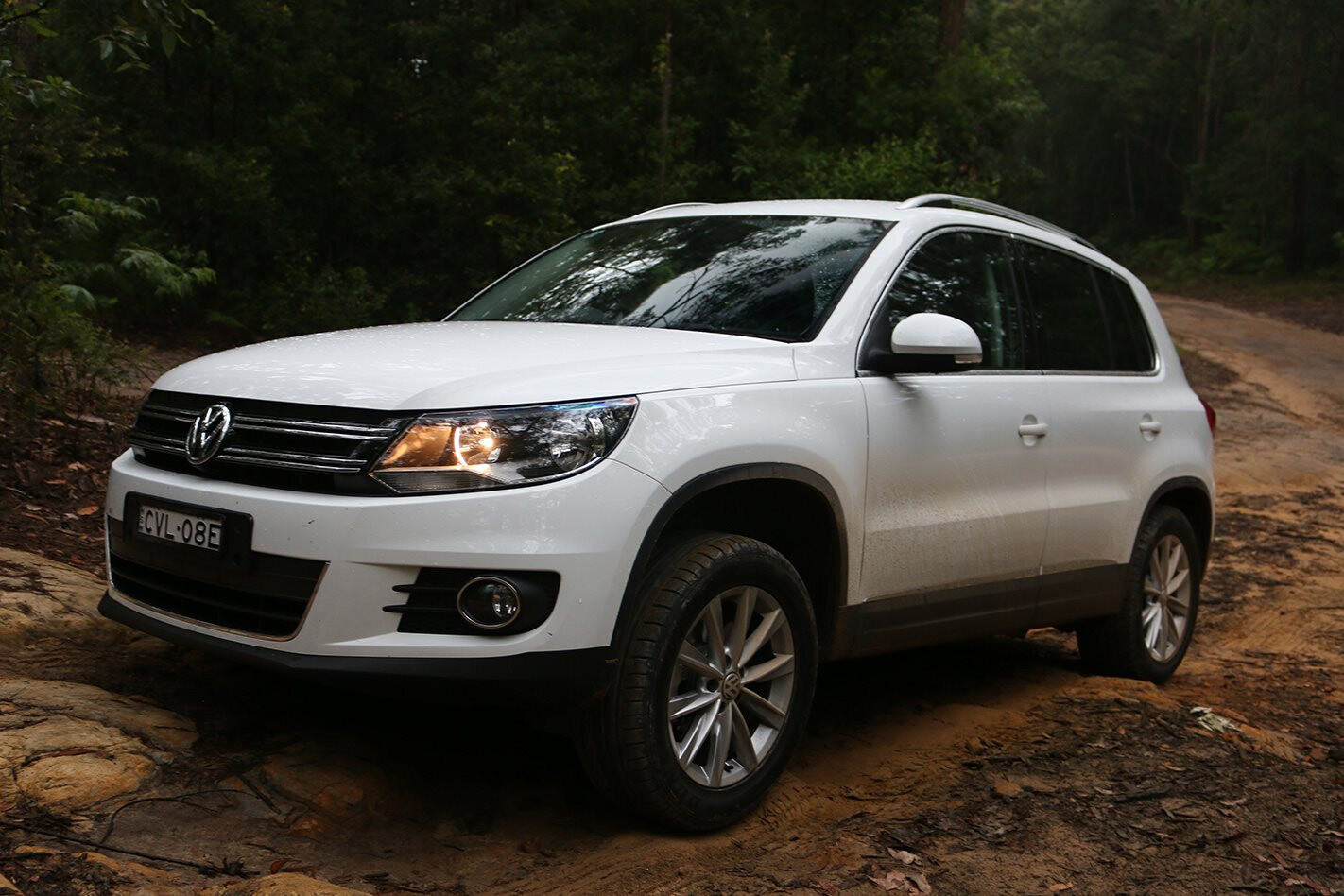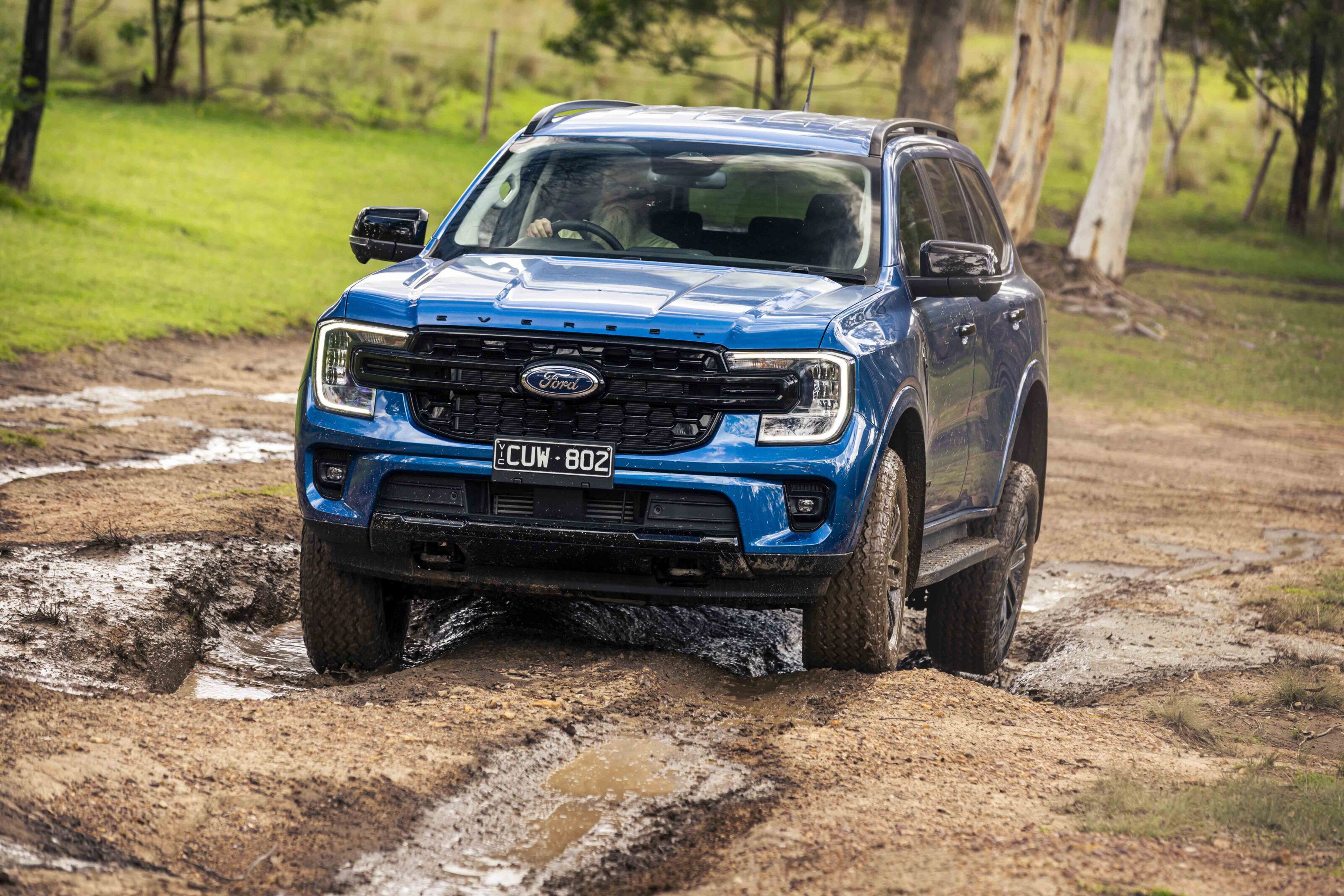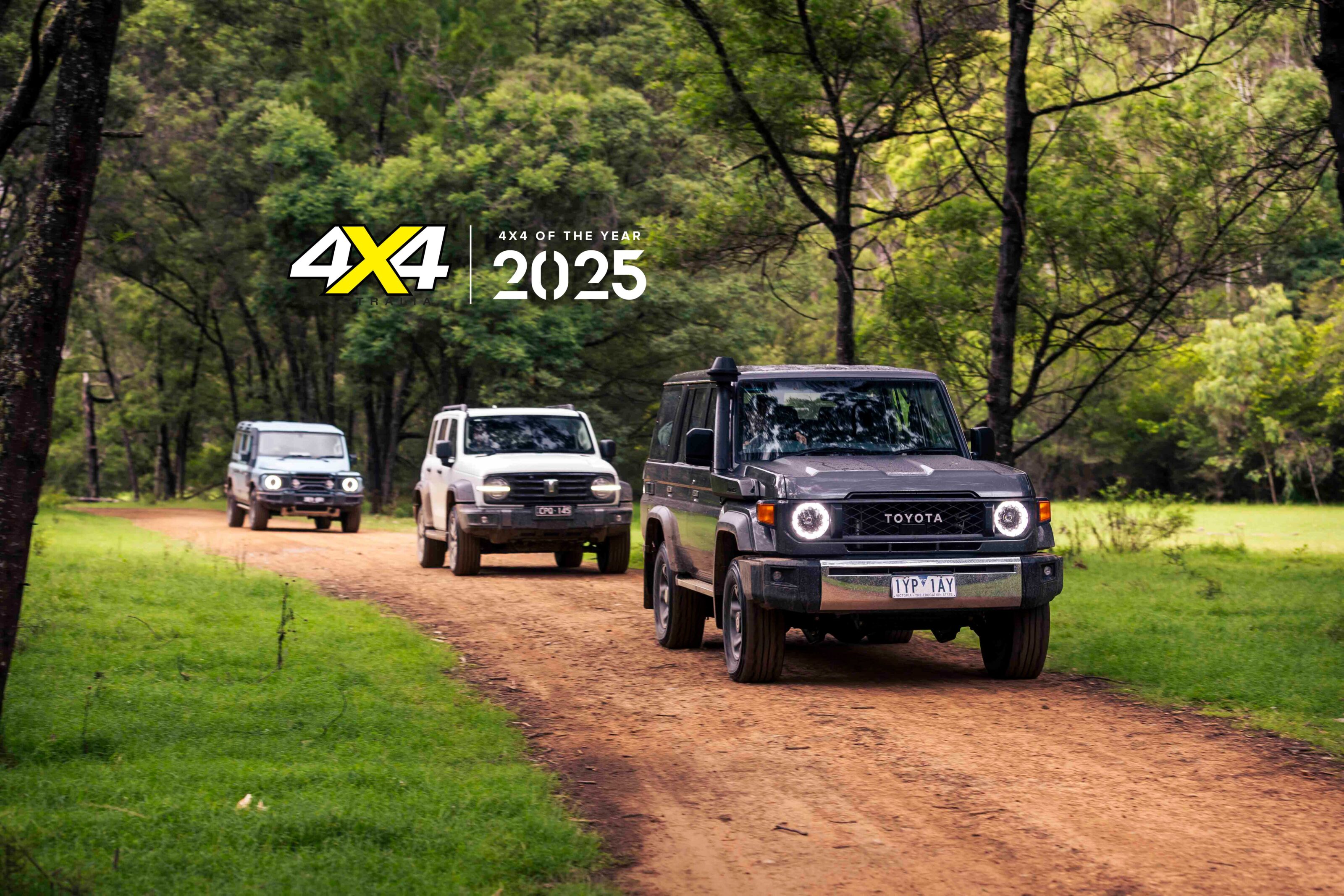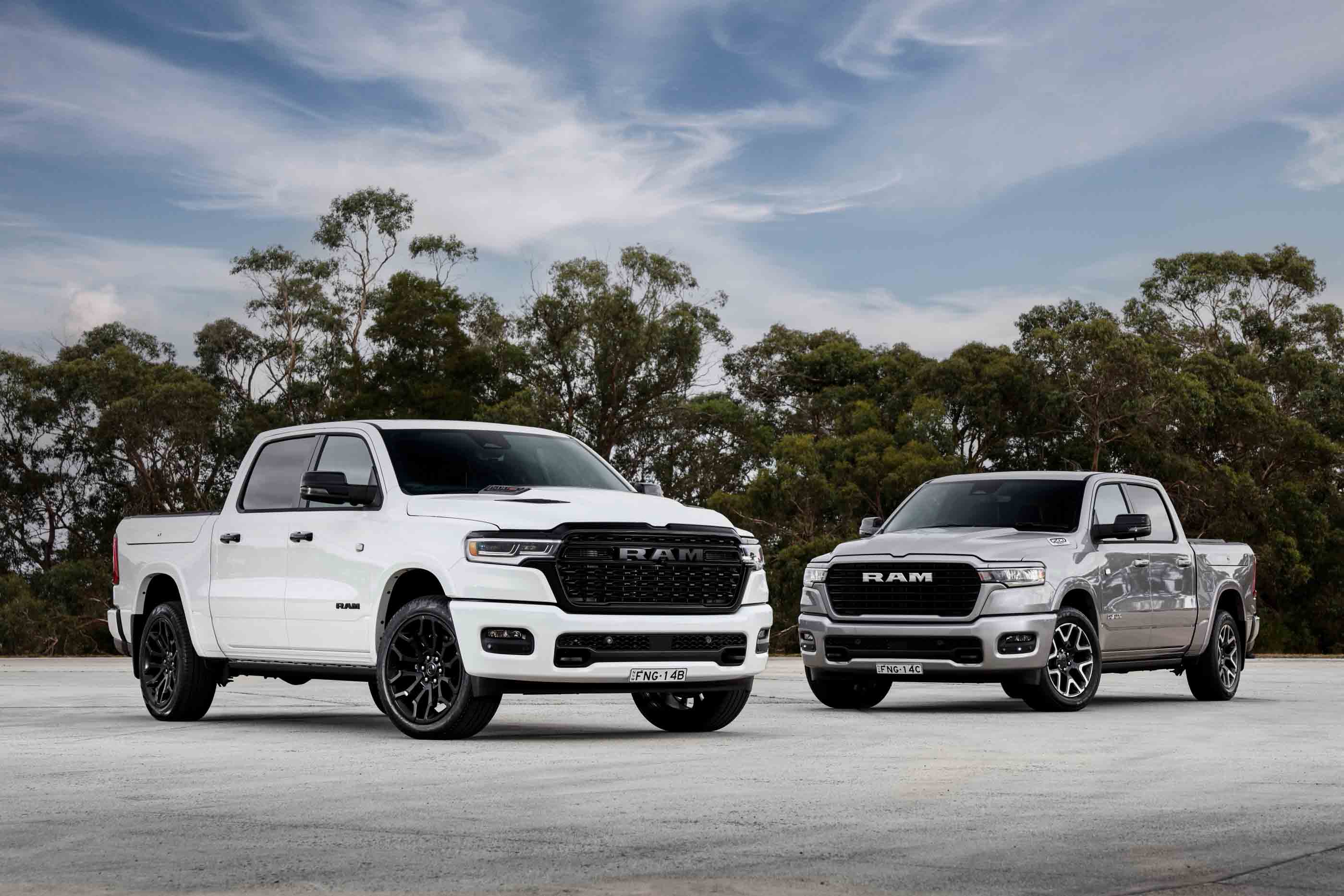Price and specifications
Price: $39,990
Engine: 2.0-litre four-cylinder turbo diesel, 130kW at 4200rpm, 380Nm at 1750-2500rpm
Transmission and 4WD system: 7-speed dual clutch automatic, on-demand four-wheel-drive
Braked tow capacity: 2000kg
Spare tyre: Space saver spare
Fuel tank: 64 litres
Fuel use (claimed): 6.2L/100km
Fuel use on test: 7.5L/100km
Approach/departure angles: 18 degrees/25 degrees
Ground clearance: 193mm
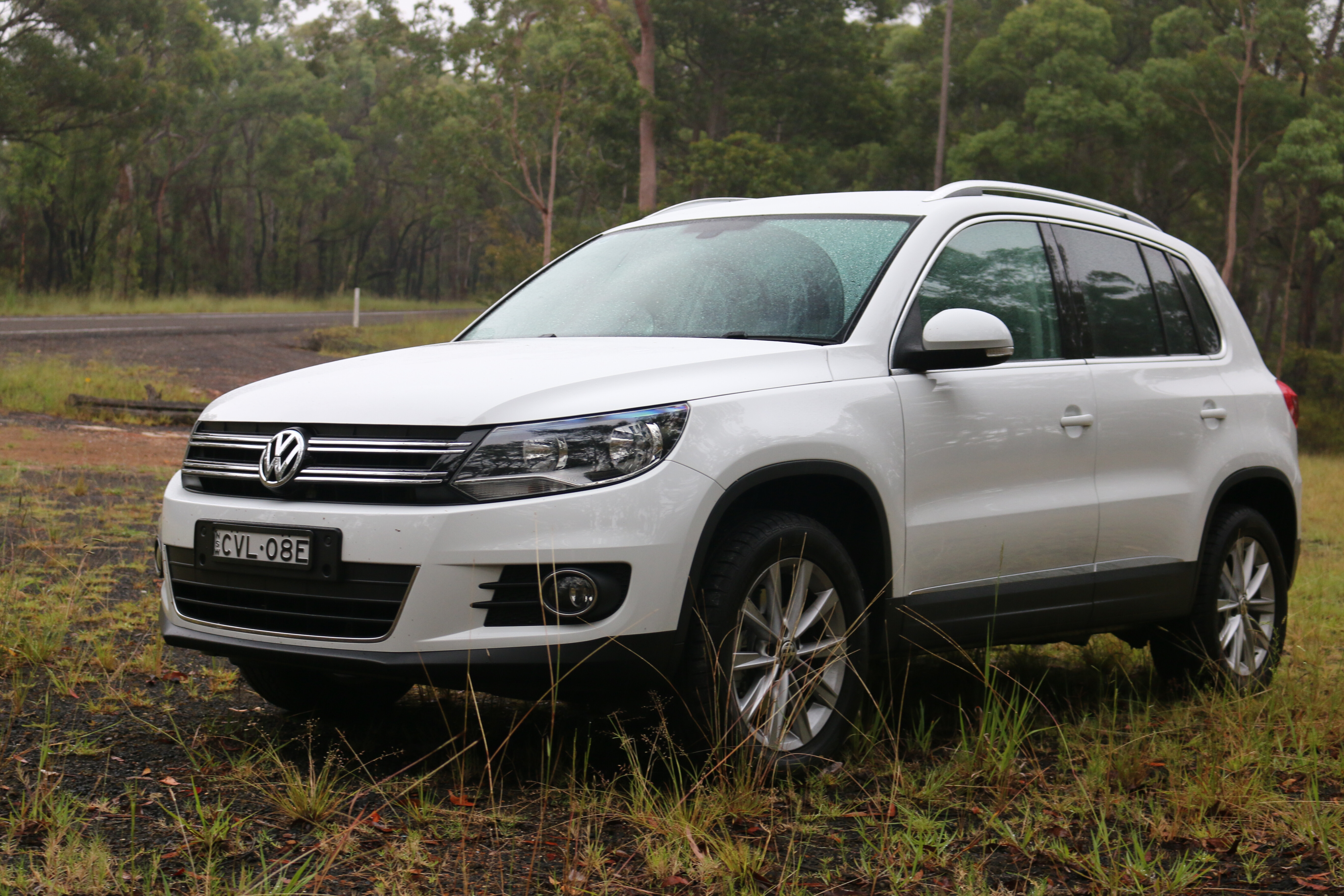
WHAT’S THE DEAL?
The Tiguan is a bit different to most SUV rivals in that it has four different engine combinations across four models (three petrol, one diesel) and as you step up in engine power you also get more equipment.
The flagship $44,990 155TSI (the number denoting the peak power output in kilowatts) comes loaded with adjustable shock absorbers, electric seats, sat-nav and leather trim.
But even the mid-level 130TDI tested here – a $39,990 proposition, fitted exclusively with an auto transmission – there’s a decent swag of gear, including rear parking sensors, Bluetooth, colour touchscreen, dual-zone air-conditioning, cruise control, rain-sensing wipers, electric park brake,
The 2015 update also brings more features, including a reversing camera and leather-bound steering wheel on all models. The fatigue detection system previously reserved for more expensive variants is also now part of the impressive standard package.
There’s also an entry-level two-wheel-drive model, the 118TSI ($28,990 for a manual and $31,490 for the auto), and a 132TSI ($36,990) driving all four wheels.
If you want any colour other than white it’s another $700.
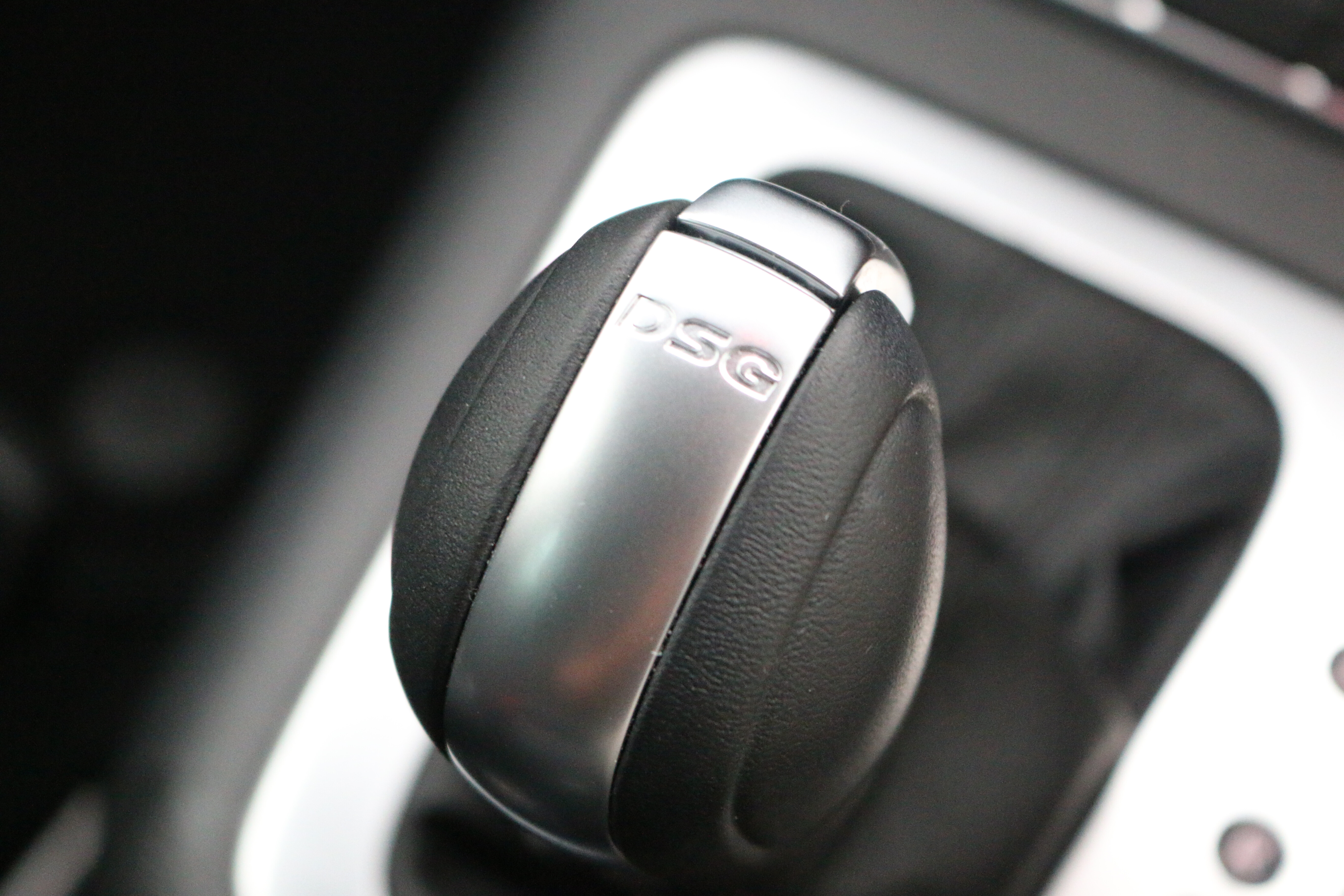
PRACTICALITY
Up front there’s good adjustability to the seats and steering wheel, translating to a car-like feel. Cupholders, deep door pockets and other areas for odds and ends ensure most things are well catered for. But the centre console is close to useless, with half its compact interior taken up by a smartphone plug.
The basic dash design is also starting to date. Eight circular air vents keep the dash looking busy, although the touchscreen that’s sits up high is a win for being close to the driver’s line of sight.
Back seat occupants are surprisingly well catered for. Despite a compact boot, head a leg room are respectable, and rear air vents keep a steady flow of fresh air heading to the back. There are some clever additions, too, such as the shallow pockets on either side of the back seat.
But the boot is small. At 4426mm long the Tiguan is shorter than most of its rivals and it’s the boot that’s been cut back. The floor is relatively shallow and it’s not particularly long; at least there’s a split-fold seat functionality for those wanting more space (albeit at the expense of passengers).
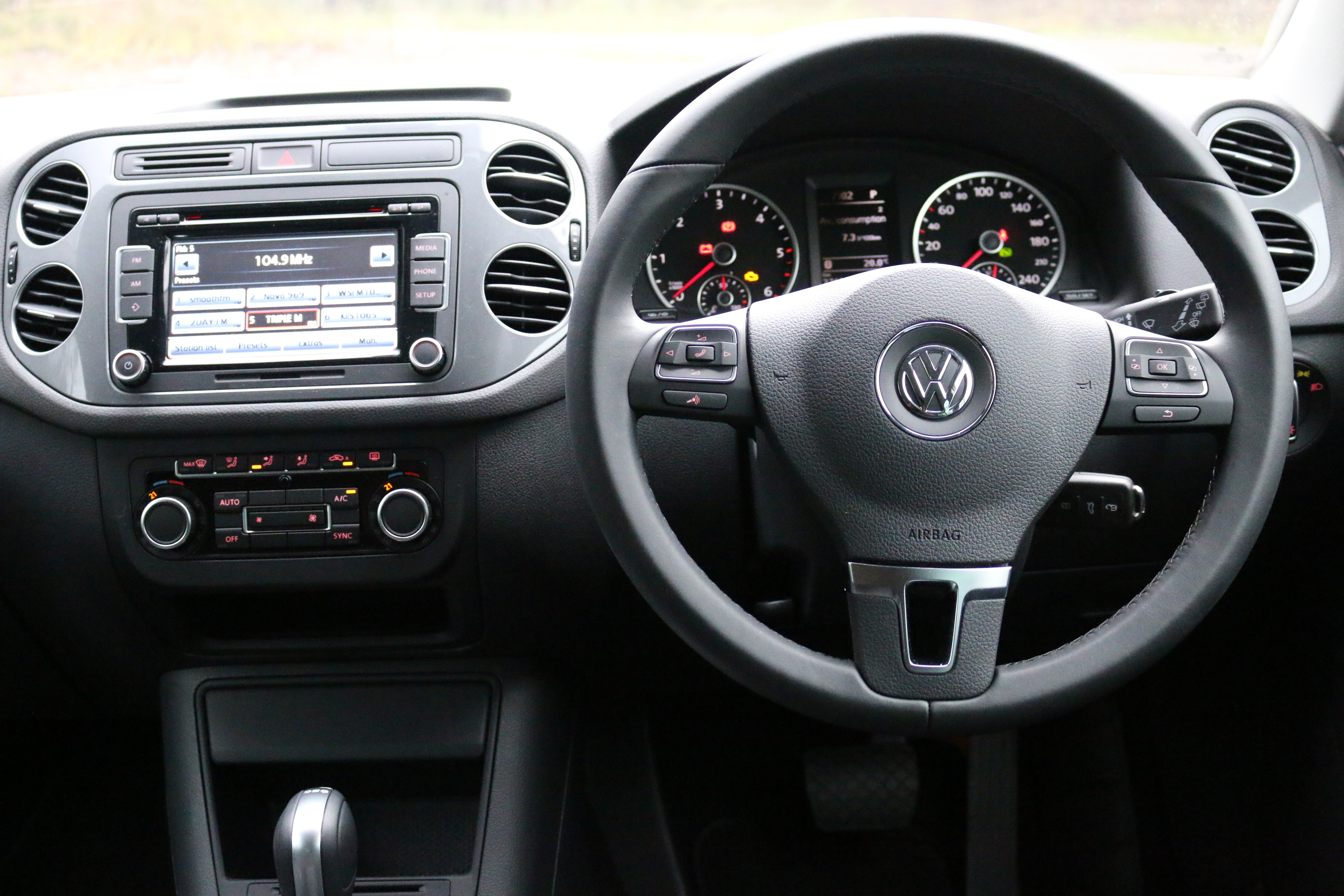
ON THE ROAD
The Tiguan has also been a sharp device on-road and it’s no different in 2015. Steering is faithful and direct, albeit with a hint of mild kickback over bumps on country roads. There’s some suspension noise but it’s otherwise relatively quiet. And the Tiguan feels reassuring when pushed, affirming it as a competent machine. The OE Dunlop tyres can let out a yelp when pushed but they’re otherwise good.
The diesel engine pulls well enough although it’s not as hushed as some. With 130kW and 380Nm it’s been boosted by 27kW and 60Nm over the model it replaces. More importantly, that torque is available lower in the rev range, now swelling to its peak by 1500rpm. Even below that it’s useful, although there’s some associated vibration as though it’s labouring slightly.
The transmission is partly to blame there as it’s been programmed to shift into higher gears early to help lower fuel use. It’s not unusual to be cruising at 70 or 80km/h in sixth or seventh gear, with engine speed as low as 1300rpm.
Fuel use is decent, though, with ours using about 7.5 litres per 100km on a mix of suburban, freeway and gravel-road running (the claimed consumption is 6.2L/100km).
As with all Volkswagen DSG automatics (a twin-clutch setup with computer controlled clutches) there’s some hesitation and grabiness in stop-start situations. Under way it’s more convincing and can shift extremely smoothly. However, a couple of times we had it hanging between first and second gears under hard acceleration.
OFF-ROAD
Other than the 4Motion four-wheel-drive system the Tiguan doesn’t have much in the way of off-road credentials.
That said, tyre pressure sensors are included on the diesel model, making it easier to determine when you get a puncture. But once you get it, you then revert to a space saver spare tyre – a weak link in the Tiguan’s off-road armoury.
At 193mm ground clearance is OK and helps it clamber over patches of rock easily enough during our test course. Wheel articulation also wasn’t as limiting as it is on some soft-road SUV rivals. While it’ll still hang a wheel in the air over some obstacles there’s respectable droop (for a road-biased car with independent suspension front and rear), helping the wheels better stay connected to the track.
The traction control system is also smart enough to divert power to the wheels with grip. It can sometimes take a second or two to figure it out, but it’s intelligent enough to make the most of the available traction.
The Tiguan is more about on-road dynamics than helping through mud or sand. It’s electronic differential lock is an extension of the stability and traction control systems and can automatically brake an inside wheel as it begins to spin, thereby sending more power to the outside wheels that have more grip.
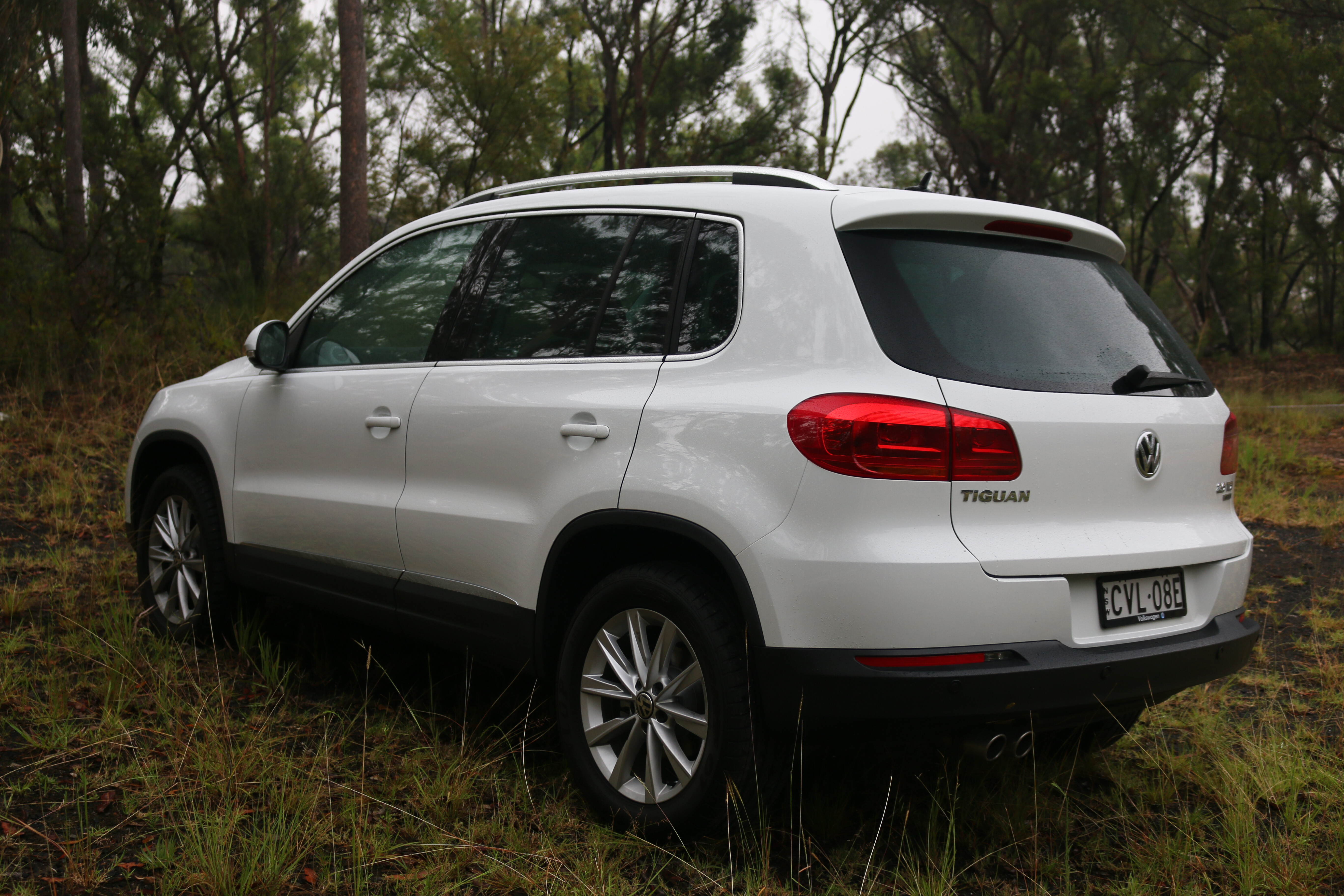
VERDICT
Age is the biggest factor working against the Tiguan. The latest refresh doesn’t change the look and it’s starting to feel tired, especially inside where it lacks the modernity of other Volkswagens. But it’s still a solid car to drive with respectable fuel economy and good on-road manners. That it is also semi-capable off-road speaks to the breadth of its modest but good ability, albeit with clear limitations.
Click here to read the full range review of the Volkswagen Tiguan
Get the latest info on all things 4X4 Australia by signing up to our newsletter.

